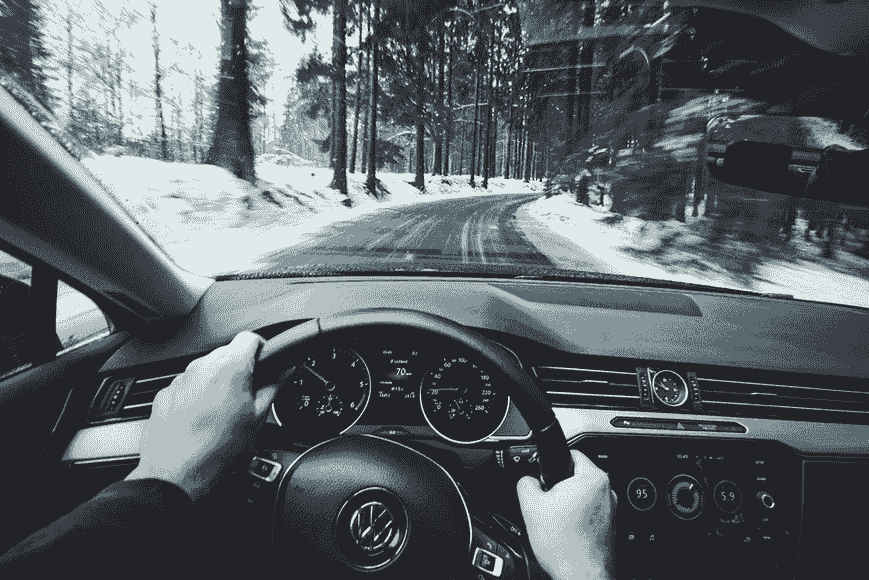Traction control is a fundamental safety feature that can keep your car from slipping and sliding in wet driving conditions. Turn it on when you know the road is slippery, but be sure it’s off if you’re tackling an icy hill or stuck in sand or mud.
If your car was manufactured after 2012, it most likely has a traction control feature. Traction control automatically starts when you turn on your car, but you have to manually turn it off when you don’t want to use it.
Traction control can help you navigate slippery terrain, but it’s important to understand its limitations. To keep you safe on the road, the car insurance
comparison and licensed broker
appJerry
is breaking down everything you need to know about when traction control is helpful and when traction control should be turned off. How does traction control work?
Traction control systems help to prevent your vehicle from losing traction by stopping the wheels whenever they begin to skid, slip, or spin out of control. To accomplish this, sensors within the vehicle monitor for discrepancies between wheel speed and actual vehicle speed. When a difference is detected, the system cuts engine power to the wheels or applies the brakes on any wheel that may be spinning out of control.
Let’s say you are driving at 40 mph, and one wheel begins to spin at a speed of 60 mph. Once the sensors detect the difference in speed, traction control will engage to slow down the wheel and keep your car from spinning out of control. When the traction control system is in use, a light on your driver information display will begin to flash.
When should traction control be turned off?
While it is usually best to drive with the traction control system turned on, there are situations where you should disable this feature.
For example, if you ever find your car stuck in the snow or mud, it’s a good idea to turn off the traction control system. Leaving the traction control system on could cut power to your wheel entirely, which would make getting unstuck a tall order. Instead, try turning off the traction control system and “rocking” your car back and forward ever so slightly to get unstuck.
Another instance where it makes sense to turn the traction control system off is if you’re driving up a steep and snowy hill. Again, with traction control on, you could lose the power to your wheels, which can be very dangerous when you’re on an incline. Instead, keep traction control off, and drive slowly up the hill.
MORE: Staying safe while driving in snow
 4.717k Ratings
4.717k Ratings5M+Drivers Joined
7M+Cars Garaged
How do I turn off traction control?
In many cars, traction control is represented by a button with an image of a car with wavy lines beneath it. Once this button is pressed, a yellow light should appear on the dashboard confirming that traction control is off. To turn traction control back on, simply press the button once again.
Of course, the traction control system varies from car to car.
If you are driving a Ford and the traction control button does not disable the system, you may have to access the steering wheel controls on the instrument cluster to turn off traction control. Press the back arrow on the left-hand side of the steering wheel and scroll down to select ‘Settings’ and then ‘Driver Assist.’ Select ‘Traction Control’ to disable.
If you are driving a Volkswagen, you should know that Volkswagens have an invasive traction control system that is difficult to disable. First, put the key into the ignition and turn the car to accessory mode. After that, hit your four-way flashers and press and release the gas pedal five times. Once the traction control light appears on the dashboard and you start your car, the traction control system should be turned off.
It should be noted that once you move five feet, the Volkswagen traction control system turns itself back on, so if you are driving up a steep, icy hill, it might make sense to use snow tires or put snow chains or cables on your wheels instead of using traction control.
MORE: Winter tires vs. all-season tires: Which is better?
When should traction control be turned on?
In almost every imaginable scenario, traction control should be left on. This is why, when you start your car, chances are the traction control system turns itself on automatically. The traction control system will not damage your car if it is left on.
If you are driving without traction control and hazardous weather occurs, your vehicle can spin out and veer off the road. If you know the road you are driving is slippery, make sure your traction control is turned on to help preserve your car’s stability in adverse conditions.
How to find cheap car insurance for your vehicle
Don’t rely on your traction control system alone to prevent an accident—there is no substitute for safe driving. There is also no substitute for great car insurance! Download the Jerry
app so you can compare rates from over 55 top insurance providers. In under a minute, Jerry can have you on the road with better coverage at a lower rate. Jerry will even help cancel your old plan to ensure there isn’t a missed moment of coverage.
“Jerry
got me out of a bind! I bought a new car, and my existing insurance raised my prices and didn’t budge. Thankfully, Jerry got me an affordable rate without me waiting for phone calls all day.” —Felicia M.
FAQs
